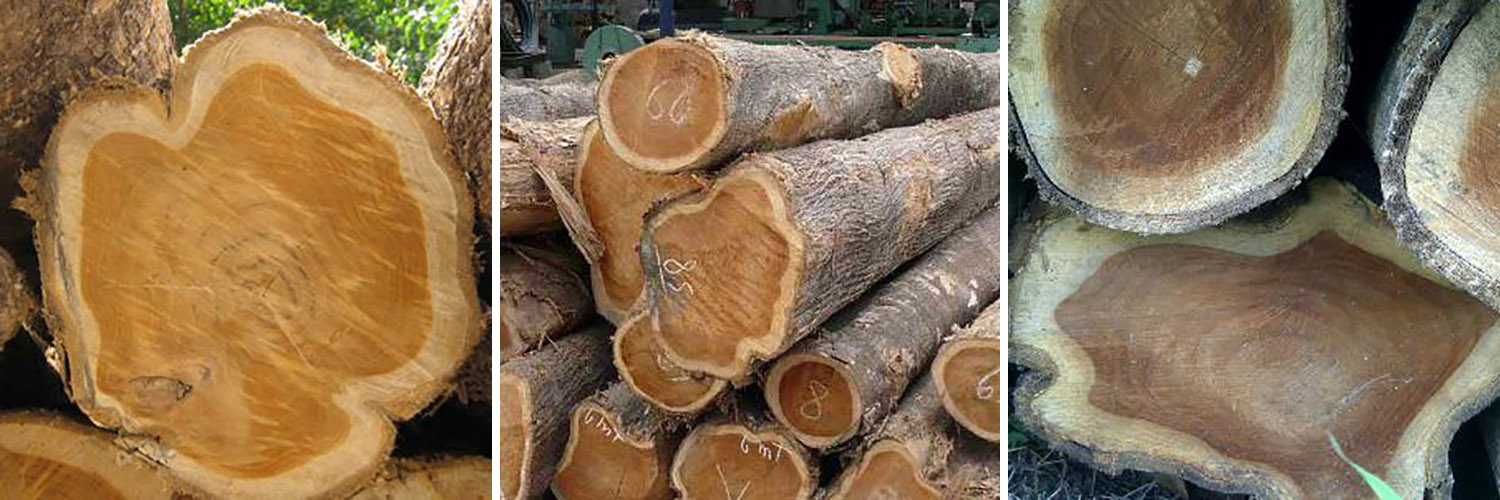Teak
Teak (Tectona grandis) is a tropical hardwood tree species placed in the flowering plant family Lamiaceae. Tectona grandis is a large, deciduous tree that occurs in mixed hardwood forests. It has small, fragrant white flowers and large papery leaves that are often hairy on the lower surface. It is sometimes known as the "Burmese teak". Teak wood has a leather-like smell when it is freshly milled. It is particularly valued for its durability and water resistance, and is used for boat building, exterior construction, veneer, furniture, carving, turnings, and other small wood projects. Tectona grandis is native to south and southeast Asia, mainly India, Sri Lanka,Indonesia, Malaysia, Thailand, Myanmar and Bangladesh but is naturalised and cultivated in many countries in Africa and the Caribbean. Myanmar's teak forests account for nearly half of the world's naturally occurring teak. Molecular studies show that there are two centres of genetic origin of teak; one in India and the other in Myanmar and Laos. "CP teak" ("Central Province" teak) is a description of teak from the central states of India. "Nagpur teak" is another regional Indian teak. It produces small, white flowers arranged in dense clusters (panicles) at the end of the branches. Flowers contain both types of reproductive organs (perfect flowers)

Description:
Teak is a large, deciduous tree up to 40 m (131 ft) tall with gray to grayish brown branches. Leaves are ovate-elliptic to ovate, 15–45 cm (5.9–17.7 in) long by 8–23 cm (3.1–9.1 in) wide, and are held on robust petioles that are 2–4 cm (0.8–1.6 in) long. Leaf margins are entire.
Fragrant white flowers are borne on 25–40 cm (10–16 in) long by 30 cm (12 in) wide panicles from June to August. The corolla tube is 2.5–3 mm long with 2 mm wide obtuse lobes. Tectona grandis sets fruit from September to December; fruits are globose and 1.2-1.8 cm in diameter. Flowers are weakly protandrous in that the anthers precede the stigma in maturity and pollen is shed within a few hours of the flower opening. The flowers are primarily entomophilous (insect-pollinated), but can occasionally be anemophilous(wind-pollinated). A 1996 study found that in its native range in Thailand, the major pollinator were species in the Ceratina genus of bees.
Uses:
Teak's high oil content, high tensile strength and tight grain make it particularly suitable where weather resistance is desired. It is used in the manufacture of outdoor furniture and boat decks. It is also used for cutting boards, indoor flooring, countertops and as a veneerfor indoor furnishings. Although easily worked, it can cause severe blunting on edged tools because of the presence of silica in the wood. Over time teak can weather to a silvery-grey finish, especially when exposed to sunlight.
Teak is used extensively in India to make doors and window frames, furniture, and columns and beams in old type houses. It is resistant to termite attacks and damage caused by other insects. Mature teak fetches a very good price. It is grown extensively by forest departments of different states in forest areas.
Leaves of the teak wood tree are used in making Pellakai gatti (jackfruit dumpling), where batter is poured into a teak leaf and is steamed. This type of usage is found in the coastal district of Udupi in the Tulunadu region in South India. The leaves are also used in gudeg, a dish of young jackfruit made in Central Java, Indonesia, and give the dish its dark brown color.
